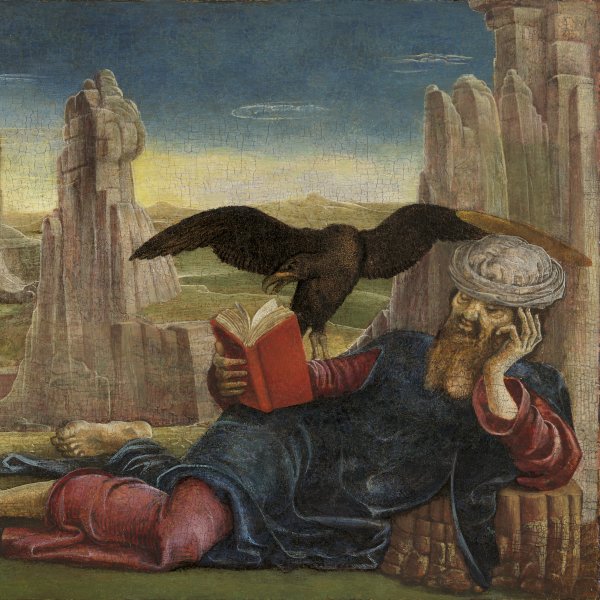Cosmè Tura
Ferrara, ca. 1430 -1495
Cosmè Tura was an Italian Renaissance artist and the son of a cobbler. He is considered to be the founder and one of the leading figures of the Ferrarese school. Tura was court painter to the d’Este, working first for Duke Borso and then for his son Ercole. In addition to his activities as a painter, he produced designs for stained glass, banners and tapestries. Nothing is known of Tura’s training but he may have studied in Venice or had contacts with artists from that city and he was familiar with the work of Pisanello, Van der Weyden, Jacopo Bellini and Piero della Francesca. Tura was rarely absent from Ferrara with the exception of the years between 1453 and 1456 when he was away, possibly in Padua (where he could have studied the work of Donatello and Mantegna) and in Venice. Tura’s dry, linear style is comparable to that of Squarcione, Zoppo and Bartolomeo Vivarini and his approach to landscape and colour also reveals the influence of the school of Ferrarese miniaturists.
Notable among Tura’s early paintings are The Virgin and Child with Saint Jerome (Musée Fesch, Ajaccio), and a Muse (National Gallery, London). The Annunciation, Saint George and the Dragon (Museo del Duomo, Ferrara), and the Roverella Altarpiece can be considered three masterpieces by his hand. The latter is now divided between various museums and collections: The Pietà is now in the Louvre, and The Virgin and Child with musical Angels in the National Gallery, London. Tura’s most celebrated work is the series of mural paintings commissioned by Borso d’Este for the Palazzo Schifanoia, which conveys all the splendour of court life in Ferrara at that time. Tura also executed numerous portraits, most now lost. They include Portrait of a young Man (The Metropolitan Museum of Art, New York). His religious compositions are more dramatic in tone, of which a representative example is Saint Jerome (National Gallery, London).
The last known work by his hand is Saint Anthony (Galleria Estense, Modena) of 1484, executed some years before his death in 1495. Tura was eclipsed in his last years by Ercole de´ Roberti, whose softer style conformed better to the taste of his patrons.
Notable among Tura’s early paintings are The Virgin and Child with Saint Jerome (Musée Fesch, Ajaccio), and a Muse (National Gallery, London). The Annunciation, Saint George and the Dragon (Museo del Duomo, Ferrara), and the Roverella Altarpiece can be considered three masterpieces by his hand. The latter is now divided between various museums and collections: The Pietà is now in the Louvre, and The Virgin and Child with musical Angels in the National Gallery, London. Tura’s most celebrated work is the series of mural paintings commissioned by Borso d’Este for the Palazzo Schifanoia, which conveys all the splendour of court life in Ferrara at that time. Tura also executed numerous portraits, most now lost. They include Portrait of a young Man (The Metropolitan Museum of Art, New York). His religious compositions are more dramatic in tone, of which a representative example is Saint Jerome (National Gallery, London).
The last known work by his hand is Saint Anthony (Galleria Estense, Modena) of 1484, executed some years before his death in 1495. Tura was eclipsed in his last years by Ercole de´ Roberti, whose softer style conformed better to the taste of his patrons.




